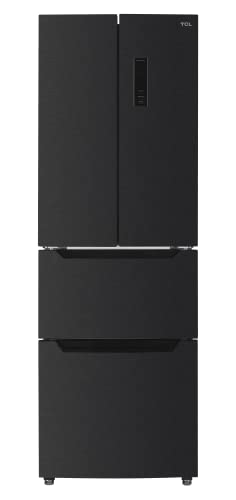The Comprehensive Guide to Refrigerators in the UK
Fridges are a necessary device in every family, serving an important role in food preservation and safety. The UK market provides a varied series of fridge types, sizes, functions, and brand names. This short article intends to offer an extensive understanding of refrigerators offered in the UK, including their functions, energy efficiency, and factors to think about when making a purchase.
Types of Refrigerators Available in the UK
When searching for a refrigerator, it is necessary to comprehend the different types readily available. Each type includes its own set of functions and functions, catering to various needs and choices. The most common types of refrigerators found in the UK include:
1. Top Freezer Refrigerators
- Description: The standard style, including the freezer compartment on top.
- Pros: More budget friendly, spacious, easy access to fresh food.
- Cons: Limited freezer space, the top may be less hassle-free for bulk items.
2. Bottom Freezer Refrigerators
- Description: Freezer lies at the bottom, permitting simpler access to fresh food.
- Pros: Greater benefit, much better exposure of fresh products.
- Cons: Usually more costly, some might deal with big frozen products.
3. Side-by-Side Refrigerators
- Description: Features two vertical compartments, one for the fridge and one for the freezer.
- Pros: Ample storage area, easy to gain access to both frozen and fresh foods.
- Cons: Wider footprint, they might not fit in smaller sized kitchen areas.
4. French Door Refrigerators
- Description: Combines features of bottom freezers and side-by-sides, with 2 doors for the fridge on top.
- Pros: Stylish design, spacious, and often consists of sophisticated features.
- Cons: Higher cost point, lines up improperly with smaller sized kitchen area layouts.
5. Compact Refrigerators
- Description: Smaller designs developed for limited areas.
- Pros: Ideal for little apartments or offices, energy-efficient.
- Cons: Limited storage capability, might do not have functions.
6. Integrated Refrigerators
- Description: Designed to blend effortlessly with kitchen area cabinets.
- Pros: Custom fit, visual appeal, increases home value.
- Cons: Higher cost, may offer less flexibility in positioning.
7. Smart Refrigerators
- Description: Equipped with Wi-Fi and smart innovation features.
- Pros: Advanced features like touch screens and internal cams.
- Cons: Expensive, more complex to repair.
| Refrigerator Type | Accessibility | Typical Price Range | Energy Efficiency |
|---|---|---|---|
| Leading Freezer | Moderate | ₤ 300 - ₤ 600 | Typical |
| Bottom Freezer | High | ₤ 400 - ₤ 800 | Above Average |
| Side-by-Side | Easy | ₤ 800 - ₤ 1500 | Varies |
| French Door | High | ₤ 800 - ₤ 2000 | High |
| Compact | Minimal | ₤ 200 - ₤ 500 | Average |
| Integrated | Custom-made | ₤ 1000 - ₤ 2500 | High |
| Smart | Variable | ₤ 1200+ | High |
Secret Features to Consider
- Energy Efficiency: Look for designs that are energy-efficient. In the UK, devices are rated from A (most efficient) to G (least effective). An A+ rating and above can result in considerable energy cost savings.
- Capability: Choose a fridge with sufficient capability for your household. A standard guideline is 100-200 liters per individual.
- Noise Level: Consider designs that operate quietly, especially if the kitchen area is near living areas.
- Cooling Technology: Features like frost-free technology are worth the investment, as they reduce maintenance.
- Adjustable Shelves: Having adjustable racks boosts the flexibility to keep larger products.
- Temperature Control: Check for user friendly temperature level controls and zones for various types of food.
- Style: Choose the style and color that matches your kitchen area aesthetic, whether you choose a modern-day stainless steel appearance or a timeless retro surface.
Buying Tips
- Determine Your Needs: Consider your cooking routines, household size, and kitchen area space.
- Set a Budget: Refrigerators been available in different rate ranges. Develop read on before you start shopping.
- Research Energy Ratings: Invest in energy-efficient designs to minimize utility costs.
- Read Reviews: User experiences can supply insights into reliability and efficiency.
- Compare Brands: Some brand names are understood for their toughness while others might offer more ingenious features.
Often Asked Questions (FAQs)
1. The length of time do refrigerators generally last?
- Refrigerators usually last between 10 to 20 years, depending upon the brand name and how well they are preserved.
2. Exist any maintenance suggestions for lengthening the life of a refrigerator?
- Routinely tidy the coils, check the door seals, and regularly defrost if necessary to maintain optimum performance.
3. What is the best size refrigerator for a family of four?
- For a household of 4, a refrigerator with a capacity of around 400-600 liters is usually sufficient.
4. Do I need to fret about energy consumption when purchasing a refrigerator?
- Yes, energy consumption is necessary. Try to find systems with high energy efficiency ratings to lower monthly expenses.
5. Should I choose a fridge with a water and ice dispenser?
- This feature can be hassle-free, especially for families. Nevertheless, it may need more maintenance than standard models.
Acquiring a refrigerator is a significant decision for any family in the UK. With different types readily available, each with its special functions and advantages, it is crucial to assess specific needs before choosing. By thinking about elements such as energy effectiveness, capacity, and design aesthetic appeals, customers can pick a fridge that lines up well with their lifestyle, eventually improving their kitchen experience while securing food quality and freshness.

